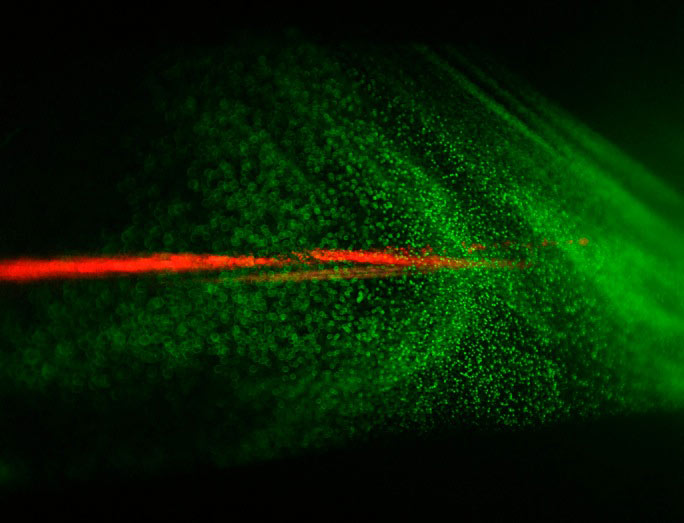Lasers Spark Breakthrough in Neuron Regeneration

The key to curing debilitating diseases such as Alzheimer's and Parkinson's could lie in the use of precision of lasers. These lasers can build up the complex microscopic scaffolding needed to deliver and support lab-grown replacement cells. Much smaller and more intricate than existing scaffolding, these lasers give scientists a new level of control and flexibility.
The technology, developed by researchers at the University of Sheffield and the Institute of Electronic Structure and Laser, drastically improves scientists' ability to manipulate the scaffolds to serve specific functions. In the case of diseases such as Alzheimer’s, the scaffolds could be harnessed as vehicles that deliver cells to damaged locations along the peripheral nerves, spinal cord and brain, and incite neural regeneration.
"With these laser direct write techniques, the structure of the produced scaffolds can be optimized for different applications," said Frederik Claeyssens, one of the co-authors of the study. "For example, we can guide neurons to grow along a given direction, which is important for peripheral nerve repair."
To test the biocompatibility of the laser-designed structures, the scientists grew neuronal cells on the scaffolds and carefully observed how they developed and aligned. The results were extremely positive, with less than 10 percent of the cells dying after five days.
Though Claeyssens predicts it will be at least another decade before these laser-based techniques are widely available to battle neurodegenerative diseases, he and his colleagues remain optimistic about the future of their field.
"The population is aging and there will never be enough organ donors," said Maria Farsari, another researcher on the project. "Tissue engineering is the way forward."
This story was provided InnovationNewsDaily, a sister site to Live Science. Follow InnovationNewsDaily on Twitter @News_Innovation, or on Facebook.
Get the world’s most fascinating discoveries delivered straight to your inbox.
